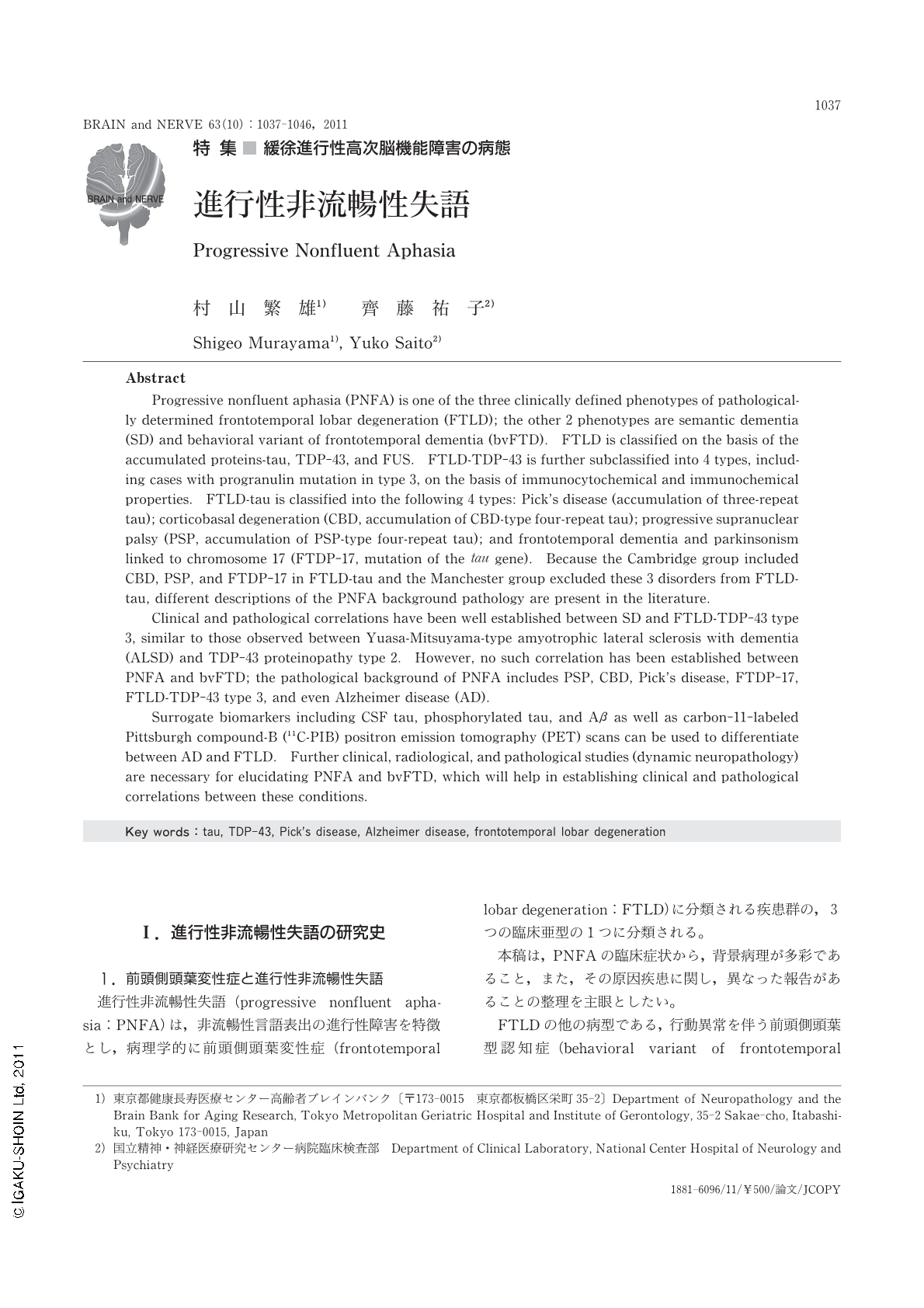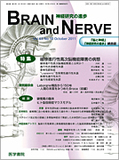Japanese
English
- 有料閲覧
- Abstract 文献概要
- 1ページ目 Look Inside
- 参考文献 Reference
Ⅰ.進行性非流暢性失語の研究史
1.前頭側頭葉変性症と進行性非流暢性失語
進行性非流暢性失語(progressive nonfluent aphasia:PNFA)は,非流暢性言語表出の進行性障害を特徴とし,病理学的に前頭側頭葉変性症(frontotemporal lobar degeneration:FTLD)に分類される疾患群の,3つの臨床亜型の1つに分類される。
本稿は,PNFAの臨床症状から,背景病理が多彩であること,また,その原因疾患に関し,異なった報告があることの整理を主眼としたい。
Abstract
Progressive nonfluent aphasia (PNFA) is one of the three clinically defined phenotypes of pathologically determined frontotemporal lobar degeneration (FTLD); the other 2 phenotypes are semantic dementia (SD) and behavioral variant of frontotemporal dementia (bvFTD). FTLD is classified on the basis of the accumulated proteins-tau, TDP-43, and FUS. FTLD-TDP-43 is further subclassified into 4 types, including cases with progranulin mutation in type 3, on the basis of immunocytochemical and immunochemical properties. FTLD-tau is classified into the following 4 types: Pick's disease (accumulation of three-repeat tau); corticobasal degeneration (CBD, accumulation of CBD-type four-repeat tau); progressive supranuclear palsy (PSP, accumulation of PSP-type four-repeat tau); and frontotemporal dementia and parkinsonism linked to chromosome 17 (FTDP-17, mutation of the tau gene). Because the Cambridge group included CBD, PSP, and FTDP-17 in FTLD-tau and the Manchester group excluded these 3 disorders from FTLD-tau, different descriptions of the PNFA background pathology are present in the literature.
Clinical and pathological correlations have been well established between SD and FTLD-TDP-43 type 3, similar to those observed between Yuasa-Mitsuyama-type amyotrophic lateral sclerosis with dementia (ALSD) and TDP-43 proteinopathy type 2. However, no such correlation has been established between PNFA and bvFTD; the pathological background of PNFA includes PSP, CBD, Pick's disease, FTDP-17, FTLD-TDP-43 type 3, and even Alzheimer disease (AD).
Surrogate biomarkers including CSF tau,phosphorylated tau,and Aβ as well as carbon-11-labeled Pittsburgh compound-B (11C-PIB) positron emission tomography (PET) scans can be used to differentiate between AD and FTLD. Further clinical,radiological,and pathological studies (dynamic neuropathology) are necessary for elucidating PNFA and bvFTD,which will help in establishing clinical and pathological correlations between these conditions.

Copyright © 2011, Igaku-Shoin Ltd. All rights reserved.


